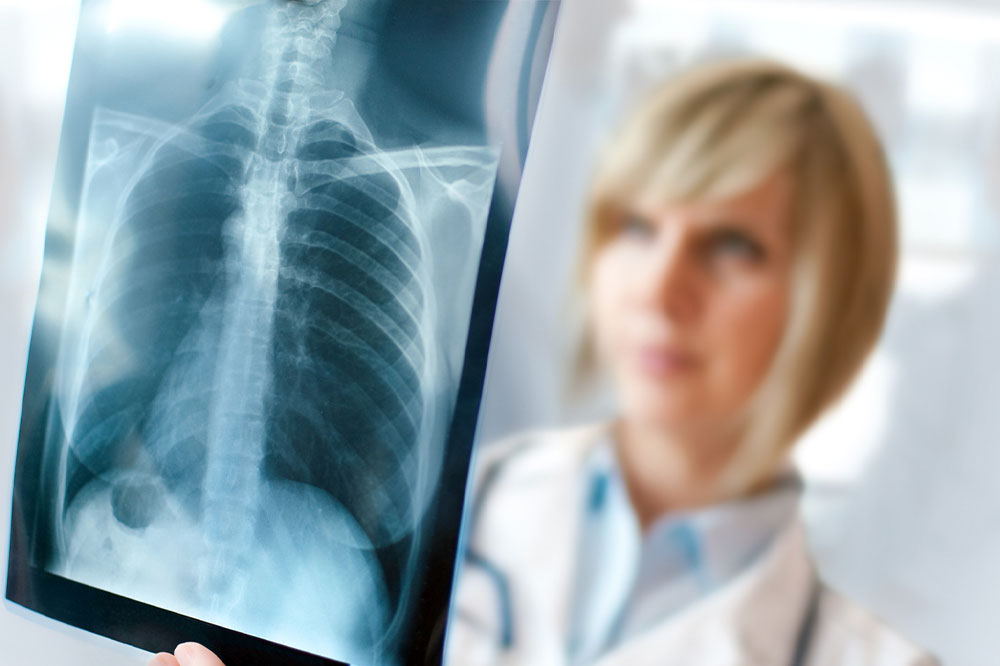11 common symptoms of lung cancer

Lung cancer is a serious disease that affects millions worldwide. Early detection plays a crucial role in improving treatment outcomes and increasing the chances of survival. Recognizing the warning signs and seeking prompt treatment can significantly impact the prognosis. By understanding these signs, individuals can become more proactive in monitoring their health and seeking timely intervention. This information also serves a huge purpose for people with a family history of lung or other types of cancer.
Persistent cough
A persistent or chronic cough is one of the most common symptoms of lung cancer. It can go on for several weeks or months if left untreated. Over time, the cough can worsen and may even be accompanied by blood-tinged sputum. It is essential to pay attention to the duration and frequency of the cough and seek evaluation if it persists or intensifies.
Shortness of breath
Breathlessness or shortness of breath experienced without cause or activity can be a huge red flag for people at risk of developing lung cancer. If one starts experiencing this symptom while performing day-to-day activities, it could indicate an underlying condition that should not be ignored. The tumor growing in the lungs can obstruct free breathing and the passage of gases through the airway. It can also cause inflammation, resulting in persistent shortness of breath.
Chest pain
Persistent or worsening chest pain can be an alarming sign of lung cancer. The pain may be localized or radiate to the back, shoulders, or arms. Lung cancer-related chest pain can result from the tumor pressing against the chest wall, invading nearby tissues, or causing inflammation. Those experiencing persistent or severe chest pain should seek medical attention for a thorough examination.
Unexplained loss of body mass
Unintentional reductions in body mass, particularly when significant, can be a red flag for various underlying health conditions, including lung cancer. Cancer cells can alter the body’s metabolism, leading to unexplained changes even without any difference in appetite or eating habits.
Fatigue and weakness
Persistent fatigue, weakness, or a general feeling of lethargy can be early warning signs of lung cancer. Cancer cells consume a significant amount of energy and can affect the body’s overall energy levels, leading to fatigue. If patients are constantly tired or lacking energy despite adequate rest, discussing these symptoms with a healthcare professional is essential.
Hoarseness or voice changes
Unexplained hoarseness or changes in one’s voice quality that persist for more than a few weeks should not be ignored. Lung tumors can affect the nerves and structures responsible for vocal cord function, leading to voice changes. If one experiences persistent hoarseness or voice changes, it is essential to have a thorough examination by an ear, nose, and throat specialist or healthcare provider.
Chronic respiratory infections
Frequent or chronic respiratory infections, such as bronchitis or pneumonia, can sometimes be a sign of an underlying lung condition, including lung cancer. The presence of a tumor can weaken the immune system and make the lungs more susceptible to infections. If one experiences recurrent or persistent respiratory infections, it is important to consult a healthcare professional for further evaluation.
Wheezing
Wheezing, characterized by a high-pitched whistling sound during breathing, can be an early indication of lung cancer. It can occur when the tumor obstructs or narrows the airways, causing air to flow through constricted passages. If one notices persistent or unexplained wheezing, speaking to a doctor for a proper diagnosis and appropriate management is crucial.
Bone pain
In advanced stages of lung cancer, the disease may spread (metastasize) to other parts of the body, including the bones. Bone metastasis can cause severe pain, typically felt in the back, hips, or other areas. Suppose one experiences persistent or worsening bone pain without any apparent cause. In that case, it is important to discuss this symptom with one’s healthcare provider to explore possible underlying causes, including lung cancer.
Headaches and neurological symptoms
Lung cancer that has spread to the brain can cause headaches, seizures, dizziness, or other neurological symptoms. The presence of brain metastases can exert pressure on the brain tissues, leading to these symptoms. If one experiences recurring or severe headaches, unexplained seizures, or any other neurological signs, seeking immediate attention for further evaluation is crucial.
Swelling in the neck and face
In some cases, lung cancer can cause a condition known as superior vena cava syndrome. This occurs when a tumor obstructs the large vein that carries blood from the upper body back to the heart. The obstruction can result in swelling, redness, or a feeling of fullness in the neck, face, or upper chest. If one notices any swelling in these areas, it is essential to seek a doctor’s advice promptly.






